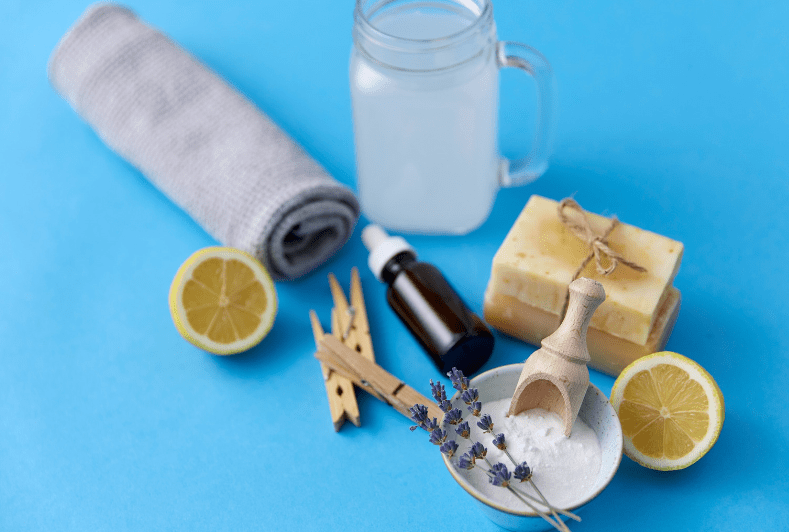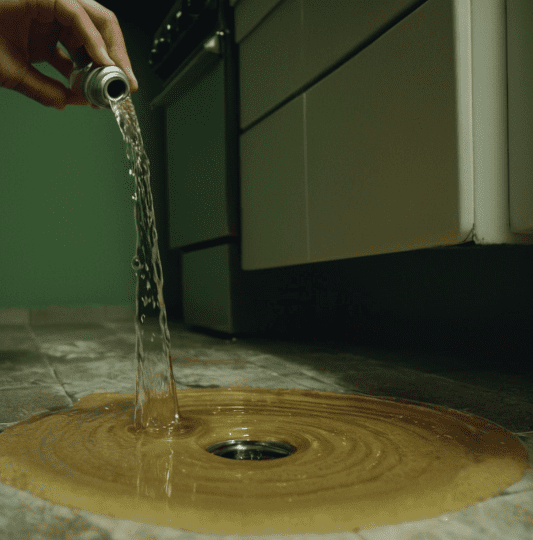
What is Washing Soda, and how does it compare to its close cousin, baking soda? Let’s dive in and explore everything you need to know about washing soda.
When it comes to household cleaning, washing soda is a star performer. This versatile compound, sodium carbonate, has many uses, from laundry to general household cleaning.
But what exactly is washing soda, and how does it compare to its close cousin, baking soda?
Secret Weapon for Sparkling Laundry & Gleaming Floors (Not Baking Soda!)
Wondering what that mysterious box in the cleaning aisle is? Washing soda is NOT just another baking soda! It’s a powerful cleaning agent that tackles tough stains, cuts through grease, and blasts away grime. But is it safe for your clothes?
Can it damage your pipes? Please read the full article to learn the shocking truth about washing soda and unlock its hidden cleaning power!
What is Washing Soda?
Definition and Chemical Composition
Washing soda, chemically known as sodium carbonate (Na2CO3), is a white, odorless powder. It is a powerful cleaning agent that can be found in many household products, particularly laundry detergents.
Common Uses of Washing Soda
In Laundry Detergents
Washing soda is a common ingredient in many laundry detergents due to its ability to remove stubborn stains and soften water. Its high alkalinity helps to break down grease, oils, and other organic compounds, making your clothes cleaner and brighter.
Washing Soda vs. Baking Soda
Chemical Properties
While washing soda is sodium carbonate, baking soda is sodium bicarbonate (NaHCO3). This slight difference in their chemical composition results in distinct properties. Washing soda is more alkaline with a pH of 11, whereas baking soda has a pH of around 8.
Abrasiveness
Washing soda is more abrasive than baking soda. This makes it highly effective for tough cleaning jobs but also means it should be used carefully on delicate surfaces to avoid scratches.
Relationship Between the Two Compounds
Despite their differences, washing soda and baking soda are related. You can actually convert baking soda to washing soda by heating it in the oven. The heat causes baking soda to release water and carbon dioxide, leaving behind washing soda.
Laundry Applications

Solvent for Stains
One of the primary roles of washing soda in laundry is acting as a solvent for stains. It helps to dissolve grease, oil, and other stains, making it easier for the detergent to lift them away.
Water Softening and Enhancing Detergent Performance
Washing soda is also excellent at softening hard water. Hard water contains minerals like calcium and magnesium that can interfere with the effectiveness of detergents. Washing soda binds with these minerals, allowing the detergent to work more effectively.
Household Uses Beyond Laundry
General Cleaning of Hard Surfaces
Washing soda isn’t just for laundry. It’s a fantastic cleaner for hard surfaces like countertops, tiles, and sinks. Simply dissolve some washing soda in water to create a powerful cleaning solution that can tackle grime and stains.
Unclogging Drains and Removing Greasy Buildup

Got a clogged drain? Washing soda can help. Its strong alkalinity breaks down greasy build-up in pipes, helping to clear clogs and keep your drains flowing freely. Just pour a mixture of washing soda and hot water down the drain and let it work its magic.
Detailed Guide to Using Washing Soda
In the Laundry Room
- Boosting Detergent: Add 1/2 cup of washing soda to your regular detergent to enhance its cleaning power.
- Removing Stains: For tough stains, create a paste with washing soda and water, apply it directly to the stain, and let it sit for a few minutes before washing.
In the Kitchen
- Cleaning Surfaces: Dissolve 1/2 cup of washing soda in a gallon of warm water to clean countertops, sinks, and appliances.
- Unclogging Drains: Pour 1/2 cup of washing soda down the drain followed by boiling water to break down grease and unclog pipes.
In the Bathroom
- Tile and Grout Cleaner: Make a paste with washing soda and water, apply it to grout lines, and scrub with a brush to remove dirt and mildew.
- Toilet Cleaner: Sprinkle washing soda into the toilet bowl, scrub with a brush, and let it sit before flushing for a deep clean.
In the Garage
- Cleaning Tools: Soak greasy tools in a solution of washing soda and water to remove grime.
- Removing Oil Stains: Sprinkle washing soda on oil stains on the garage floor, scrub with a brush, and rinse with water.
Safety Tips When Using Washing Soda
- Protect Your Skin: Washing soda can be irritating to the skin. Always wear gloves when handling it.
- Avoid Inhalation: The fine powder can irritate your respiratory system, so handle it carefully and avoid creating dust.
- Proper Storage: Store washing soda in a dry place, away from moisture, to prevent it from clumping.
Why Choose Washing Soda?
Washing soda is a cost-effective, environmentally friendly cleaning agent that packs a powerful punch. Its versatility makes it a valuable addition to any household cleaning arsenal. Whether you’re tackling tough laundry stains, unclogging drains, or cleaning hard surfaces, washing soda is up to the task.
FAQs About Washing Soda
1. Can I use washing soda on all fabrics? Washing soda is safe for most fabrics, but it’s best to avoid using it on delicate fabrics like wool and silk.
2. Is washing soda safe for septic systems? Yes, washing soda is safe for septic systems as it breaks down naturally and does not harm the beneficial bacteria in the septic tank.
3. How is washing soda different from OxiClean? OxiClean contains sodium percarbonate, which releases hydrogen peroxide when dissolved in water. Washing soda, on the other hand, is sodium carbonate and does not release oxygen. Both are effective cleaners, but they work differently.
4. Can washing soda be used to clean silver? No, washing soda is too abrasive for cleaning silver and can cause damage. Use a specialized silver cleaner instead.
5. How should I dispose of washing soda? Washing soda is non-toxic and can be disposed of with regular household waste. Just make sure to rinse any residues off containers before recycling.
By understanding the various uses and benefits of washing soda, you can make the most of this powerful cleaning agent in your home. Its ability to tackle a wide range of cleaning tasks makes it an indispensable part of any household cleaning routine. So next time you face a tough stain or a clogged drain, reach for washing soda – your versatile cleaning ally.


























